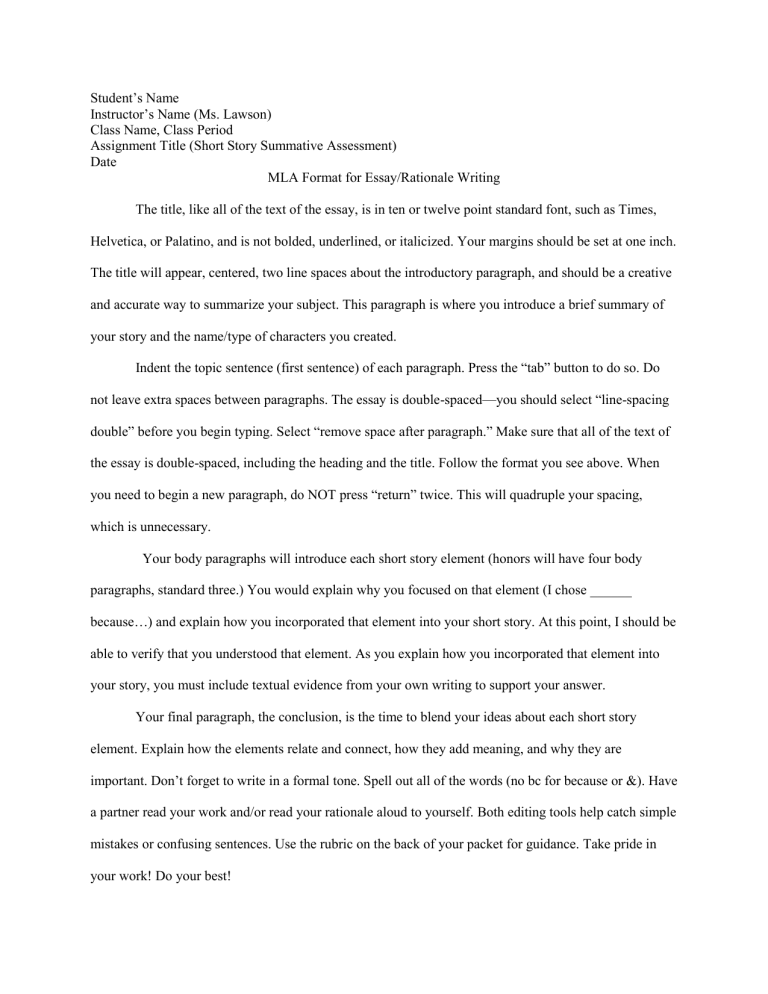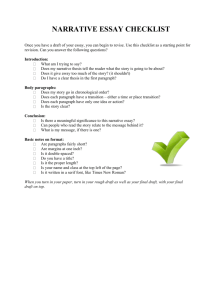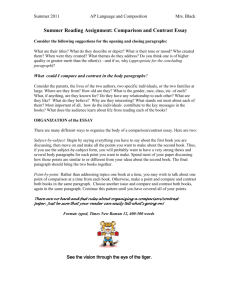How to Write Your Rationale

Student’s Name
Instructor’s Name (Ms. Lawson)
Class Name, Class Period
Assignment Title (Short Story Summative Assessment)
Date
MLA Format for Essay/Rationale Writing
The title, like all of the text of the essay, is in ten or twelve point standard font, such as Times,
Helvetica, or Palatino, and is not bolded, underlined, or italicized. Your margins should be set at one inch.
The title will appear, centered, two line spaces about the introductory paragraph, and should be a creative and accurate way to summarize your subject. This paragraph is where you introduce a brief summary of your story and the name/type of characters you created.
Indent the topic sentence (first sentence) of each paragraph. Press the “tab” button to do so. Do not leave extra spaces between paragraphs. The essay is double-spaced—you should select “line-spacing double” before you begin typing. Select “remove space after paragraph.” Make sure that all of the text of the essay is double-spaced, including the heading and the title. Follow the format you see above. When you need to begin a new paragraph, do NOT press “return” twice. This will quadruple your spacing, which is unnecessary.
Your body paragraphs will introduce each short story element (honors will have four body paragraphs, standard three.) You would explain why you focused on that element (I chose ______ because…) and explain how you incorporated that element into your short story. At this point, I should be able to verify that you understood that element. As you explain how you incorporated that element into your story, you must include textual evidence from your own writing to support your answer.
Your final paragraph, the conclusion, is the time to blend your ideas about each short story element. Explain how the elements relate and connect, how they add meaning, and why they are important. Don’t forget to write in a formal tone. Spell out all of the words (no bc for because or &). Have a partner read your work and/or read your rationale aloud to yourself. Both editing tools help catch simple mistakes or confusing sentences. Use the rubric on the back of your packet for guidance. Take pride in your work! Do your best!







